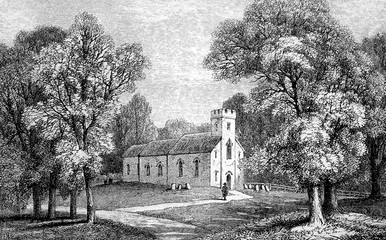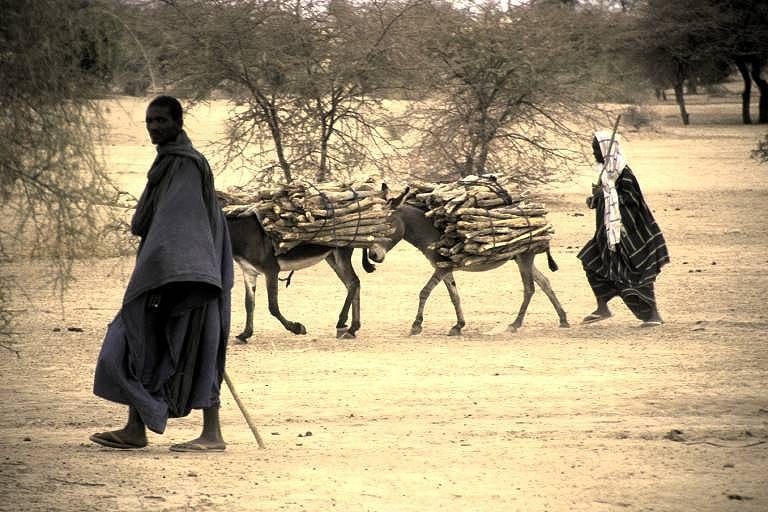|
Bavin (wood)
Bavin (wood) was a traditional unit of firewood, a large log. Description and use A bavin in the 16thC was a piece of wood standardised as three foot long and two feet round. In Hampshire in the early19thC, its cost was between 6 and 15 shillings per hundred bavins. Charles Vancouver in 1813 wrote of "Bavins for heating the oven and making a sudden but transient fire". Bavins were used especially by bakers. Literary associations Jane Austen in 1814 complained to her sister that “My Mother’s Wood is brought in-but by some mistake, no Bavins. She must therefore buy some”. See also *Faggot (unit) *Fascine *Withy A withy or withe (also willow and osier) is a strong flexible willow stem, typically used in thatching, basketmaking, gardening and for constructing woven wattle hurdles. References {{ReflistExternal links [...More Info...] [...Related Items...] OR: [Wikipedia] [Google] [Baidu] |
Firewood
Firewood is any wooden material that is gathered and used for fuel. Generally, firewood is not highly processed and is in some sort of recognizable log or branch form, compared to other forms of wood fuel like pellets or chips. Firewood can be seasoned and heat treated (dry) or unseasoned (fresh/wet). It is generally classified as hardwood or softwood. Firewood is a renewable resource. However, demand for this fuel can outpace its ability to regenerate on a local or regional level. Good forestry practices and improvements in devices that use firewood can improve local wood supplies. Moving firewood long distances can potentially transport diseases and invasive species. History For most of human history firewood was the main fuel, until the use of coal spread during the Industrial Revolution. As such, access to firewood was a valued resource, wood botes or the right to gather firewood being a significant aspect of many medieval leases. As late as 19th C America, Th ... [...More Info...] [...Related Items...] OR: [Wikipedia] [Google] [Baidu] |
Charles Vancouver
Charles Vancouver (c. 1756 – c. 1815) was an Anglo-American agricultural writer. He worked with varying success in several countries. Life He was baptised in a Dutch family at King's Lynn, Norfolk in November 1756, and was an elder brother of George Vancouver. He learned farming in Norfolk, and then was found, around 1776, a post in Ireland working for Lord Shelburne by Arthur Young, at Rahan. He worked there on bog drainage, and during the 1780s took on related reclamation work in Kentucky. Kentucky was being settled at this time by westward migration, and Vancouver had a large holding (53,000 acres) there. In 1789 Vancouver was trying to establish a settlement on the Big Sandy River, where he had 15,000 acres from 1785. The plan encountered resistance from Native Americans, who by the account of John Hanks, who accompanied Vancouver, stole the party's horses. Vancouver was hoping the intended road from Staunton, Virginia to Lexington, Kentucky would open up the area and w ... [...More Info...] [...Related Items...] OR: [Wikipedia] [Google] [Baidu] |
Jane Austen
Jane Austen (; 16 December 1775 – 18 July 1817) was an English novelist known primarily for her six major novels, which interpret, critique, and comment upon the British landed gentry at the end of the 18th century. Austen's plots often explore the dependence of women on marriage in the pursuit of favourable social standing and economic security. Her works critique the novels of sensibility of the second half of the 18th century and are part of the transition to 19th-century literary realism. Her use of biting irony, along with her realism and social commentary, have earned her acclaim among critics, scholars and readers alike. With the publication of '' Sense and Sensibility'' (1811), ''Pride and Prejudice'' (1813), '' Mansfield Park'' (1814), and ''Emma'' (1816), she achieved modest success but only little fame in her lifetime since the books were published anonymously. She wrote two other novels—'' Northanger Abbey'' and ''Persuasion'', both published posthumou ... [...More Info...] [...Related Items...] OR: [Wikipedia] [Google] [Baidu] |
Faggot (unit)
A faggot, in the meaning of "bundle", is an archaic English unit applied to bundles of certain items. Alternate spellings in Early Modern English include ''fagate, faget, fagett, faggott, fagot, fagatt, fagott, ffagott,'' and ''faggat''. A similar term is found in other languages (e.g. Latin: ''fascis''). Background Sometimes called a short faggot, a faggot of sticks equals a bundle of wood sticks or billets that is in length and in circumference. The measurement was standardised in ordinances by 1474. A small short faggot was also called a nicket. A brush-faggot (sometimes shortened to brush) was a bundle of similar size made of brushwood. A long faggot of sticks equals a bundle larger than long. In a book on slang used at Winchester College fire-dogs were fire basket ( andirons) that could hold long faggots, and half-faggots were smaller andirons that could only hold short faggots and were later converted for use with coal. A long faggot was also called a kidd faggot,Yaxl ... [...More Info...] [...Related Items...] OR: [Wikipedia] [Google] [Baidu] |
Fascine
A fascine is a rough bundle of brushwood or other material used for strengthening an earthen structure, or making a path across uneven or wet terrain. Typical uses are protecting the banks of streams from erosion, covering marshy ground and so on. In war they have often been used to help armiesin modern times, especially tanks and other vehiclescross trenches, valleys, marshes, muddy or uneven terrain, etc. Early military use Fascine bundles were used defensively for revetting (shoring up) trenches or ramparts, especially around artillery batteries, or offensively to fill in ditches and cross obstacles on a battlefield. Fascine bridges are a regularly attested feature of Roman military engineering and would have been widespread in the ancient world due to their usefulness and ease of construction. During the Siege of Alesia, the Gauls repeatedly attempted to repel the invading Romans by filling their trenches in with fascines and covering their traps, to support their cou ... [...More Info...] [...Related Items...] OR: [Wikipedia] [Google] [Baidu] |
Withy
A withy or withe (also willow and osier) is a strong flexible willow stem, typically used in thatching, basketmaking, gardening and for constructing woven wattle hurdles.Life on the Upper Thames by H. R. Robertson (1875), chapters II-IV The term is also used to refer to any type of flexible rod of natural wood used in rural crafts such as or created through coppicing [...More Info...] [...Related Items...] OR: [Wikipedia] [Google] [Baidu] |
Firewood
Firewood is any wooden material that is gathered and used for fuel. Generally, firewood is not highly processed and is in some sort of recognizable log or branch form, compared to other forms of wood fuel like pellets or chips. Firewood can be seasoned and heat treated (dry) or unseasoned (fresh/wet). It is generally classified as hardwood or softwood. Firewood is a renewable resource. However, demand for this fuel can outpace its ability to regenerate on a local or regional level. Good forestry practices and improvements in devices that use firewood can improve local wood supplies. Moving firewood long distances can potentially transport diseases and invasive species. History For most of human history firewood was the main fuel, until the use of coal spread during the Industrial Revolution. As such, access to firewood was a valued resource, wood botes or the right to gather firewood being a significant aspect of many medieval leases. As late as 19th C America, Th ... [...More Info...] [...Related Items...] OR: [Wikipedia] [Google] [Baidu] |
Fuels
A fuel is any material that can be made to react with other substances so that it releases energy as thermal energy or to be used for work. The concept was originally applied solely to those materials capable of releasing chemical energy but has since also been applied to other sources of heat energy, such as nuclear energy (via nuclear fission and nuclear fusion). The heat energy released by reactions of fuels can be converted into mechanical energy via a heat engine. Other times, the heat itself is valued for warmth, cooking, or industrial processes, as well as the illumination that accompanies combustion. Fuels are also used in the cells of organisms in a process known as cellular respiration, where organic molecules are oxidized to release usable energy. Hydrocarbons and related organic molecules are by far the most common source of fuel used by humans, but other substances, including radioactive metals, are also utilized. Fuels are contrasted with other substances o ... [...More Info...] [...Related Items...] OR: [Wikipedia] [Google] [Baidu] |



_P034_OSIER_CUTTING.jpg)

